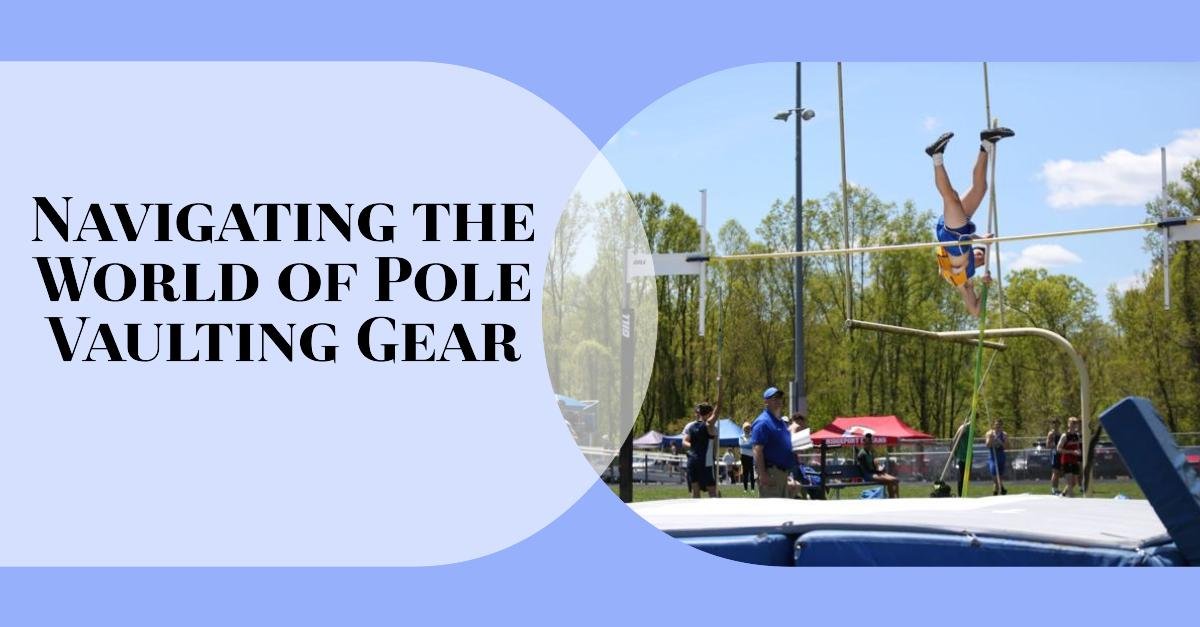Effective pole vaulting relies heavily on the quality and suitability of your equipment. In this guide, we'll explore the essential gear required for both optimal performance and safety in the sport of pole vaulting. This blog aims to provide a comprehensive overview of the gear necessary for pole vaulters at all skill levels. From the basics to advanced tools, we'll cover everything you need to know to make informed decisions about your equipment choices.
Understanding the Importance of Proper Equipment
Having the proper equipment is crucial for any athlete, but it's especially true for pole vaulters. The right gear can enhance performance, minimize the risk of injury, and optimize technique. We'll discuss how each piece of equipment contributes to overall performance and safety, highlighting key factors to consider when selecting gear.
Brief History of Pole Vaulting and Its Evolution in Gear
Pole vaulting has a rich history that spans centuries, with evidence of its practice dating back to ancient civilizations. Over time, the sport has undergone significant transformations, and so has its equipment. From rudimentary poles made of wood to the advanced carbon-fiber designs of today, we'll explore the evolution of pole vaulting gear. By understanding the roots of the sport and how its gear has evolved, athletes can gain a deeper appreciation for the equipment they use and its impact on their performance.
Essential Gear for Pole Vaulters
In this section, we will explore the fundamental equipment required for pole vaulting success. By understanding the purpose and function of each component, athletes can make informed decisions when selecting their gear. Additionally, coaches and beginners can benefit from learning about the essential tools of the trade, setting a solid foundation for skill development and progression in the sport.
The Pole: Types, Lengths, and Materials
Poles are the most crucial piece of equipment in pole vaulting, and understanding their variations is essential for athletes. This subsection will cover:
- Types of Poles: Exploring the different types of poles available, such as fiberglass, carbon fiber, and aluminum, and discussing their pros and cons.
- Length Considerations: Detailing how pole length impacts performance and how athletes can determine the optimal length based on factors like skill level and body weight.
- Materials Used: Discussing the materials used in pole construction and how they affect flexibility, durability, and overall performance.
Grips and Gripping Techniques for Optimal Performance
A secure grip on the pole is crucial for a successful vault. This subsection will cover:
- Importance of Grips: Explaining why proper gripping technique is essential for safety and maximizing vault height.
- Types of Grips: Discussing various grip styles, including the Russian grip, American grip, and mixed grip, and their advantages in different scenarios.
- Gripping Techniques: Providing step-by-step instructions on how to grip the pole correctly, including hand placement and pressure distribution, to optimize performance and prevent injuries.
Protective Equipment and Accessories
Pole vaulting involves significant risk, so ensuring the safety of athletes is paramount. Here, we'll delve into the crucial protective gear and accessories every vaulter should consider.
Helmets and Headgear: Safety First
Head injuries are a serious concern in pole vaulting. Helmets and headgear are designed to mitigate the risk of head trauma during falls or collisions with the crossbar. We'll discuss the importance of wearing certified helmets specifically designed for pole vaulting, exploring their construction, features, and the latest advancements in head protection technology. Additionally, we'll provide tips on proper fitting and maintenance to maximize safety and comfort.
Footwear: Choosing the Right Shoes for Stability and Grip
The choice of footwear significantly impacts a vaulter's performance and safety. Proper shoes provide stability, traction, and support during the approach, takeoff, and landing phases of the vault. In this section, we'll explore the different types of footwear suitable for pole vaulting, including specialized spikes and jumping shoes. We'll discuss key factors to consider when selecting the right pair, such as fit, grip patterns, cushioning, and ankle support. Additionally, we'll offer insights into maintaining and prolonging the lifespan of pole vaulting shoes to ensure optimal performance and safety on the runway.
Advanced Tools and Training Aids
Pole vaulting is a sport that requires a combination of skill, technique, and physical prowess. In this section, we'll explore some of the advanced tools and training aids that can help pole vaulters refine their technique, enhance their performance, and minimize the risk of injury.
Video Analysis Software: Enhancing Performance Through Feedback
Video analysis software has become an invaluable tool for athletes across various sports, including pole vaulting. By recording and analyzing your vaulting technique, you can identify areas for improvement and refine your performance. This section will explore the benefits of using video analysis software, how to set up recording sessions effectively, and techniques for interpreting and applying feedback to enhance your technique.
Weighted Implements and Resistance Training for Strength and Power
Strength and power are essential components of successful pole vaulting. This subsection will discuss the use of weighted implements and resistance training techniques to develop the strength and explosive power needed for efficient vaulting. We'll explore various exercises and drills tailored specifically for pole vaulters, as well as tips for incorporating these training methods into your overall workout regimen. Additionally, we'll highlight the importance of proper form and technique to maximize the effectiveness of weighted and resistance training while minimizing the risk of injury.
Maintenance and Care Tips for Pole Vaulting Equipment
Pole vaulting equipment, including poles, grips, footwear, and protective gear, represents a significant investment for athletes. Proper maintenance not only ensures the longevity of the equipment but also contributes to the safety and performance of the athlete during training and competition. This section serves as a comprehensive guide on how to effectively care for and maintain pole vaulting equipment, covering various aspects such as storage, transportation, cleaning, and maintenance.
Proper Storage and Transportation Techniques
- Proper storage and transportation of pole vaulting equipment are crucial to ensuring their longevity and optimal performance.
- Discuss the importance of storing poles in a dry and well-ventilated area to prevent moisture damage and warping.
- Provide tips on storing poles vertically or horizontally, avoiding excessive pressure on specific points.
- Highlight the significance of using protective covers or cases during transportation to shield poles from external damage, such as scratches or dents.
- Emphasize the need for securing poles properly during transit to prevent shifting or sliding that could lead to damage.
Cleaning and Maintenance Guidelines for Poles and Accessories
- Regular cleaning and maintenance are essential to prolonging the lifespan and performance of pole vaulting equipment.
- Outline a step-by-step cleaning process for poles, including using mild soap and water to remove dirt and debris, followed by drying with a soft cloth.
- Provide guidance on inspecting poles for any signs of wear or damage, such as cracks, splinters, or loose fittings, and addressing them promptly.
- Discuss the importance of checking and tightening screws, bolts, and other components regularly to prevent potential accidents or equipment failure during use.
- Offer recommendations for maintaining grip tapes or grips, such as cleaning them with alcohol wipes to remove dirt and sweat buildup, and replacing them when worn or damaged.
Conclusion:
In conclusion, maintaining and caring for your pole vaulting equipment is essential for maximizing performance, ensuring safety, and prolonging the lifespan of your gear. By following the guidelines outlined in this blog, you can keep your equipment in top condition and enjoy a successful and fulfilling pole vaulting experience. Remember to store your equipment properly, transport it with care, and regularly clean and maintain each piece to optimize its performance and longevity. With the right maintenance practices in place, you can focus on honing your skills and achieving your goals in the exhilarating sport of pole vaulting.
Frequently Asked Questions (FAQs):
- Answer: Store your poles vertically in a dry and well-ventilated area, avoiding direct sunlight and extreme temperatures. Use protective covers or cases to shield them from dust and damage.
- Answer: Perform visual inspections before and after each training session or competition. Look for cracks, splinters, loose fittings, or any other signs of wear that may compromise the integrity of your equipment.
- Answer: Yes, you can clean grips and accessories with mild soap and water, using a soft cloth or sponge to remove dirt and debris. Allow them to air dry thoroughly before using them again.
- Answer: Regularly inspect your poles for wear and tear, and clean them after each use. Additionally, check and tighten screws, bolts, and fittings periodically to ensure they are secure.
- Answer: Rotate between multiple pairs of shoes to distribute the wear evenly. Avoid using them for activities other than pole vaulting, and clean them regularly to remove dirt and sweat that can accelerate deterioration.

